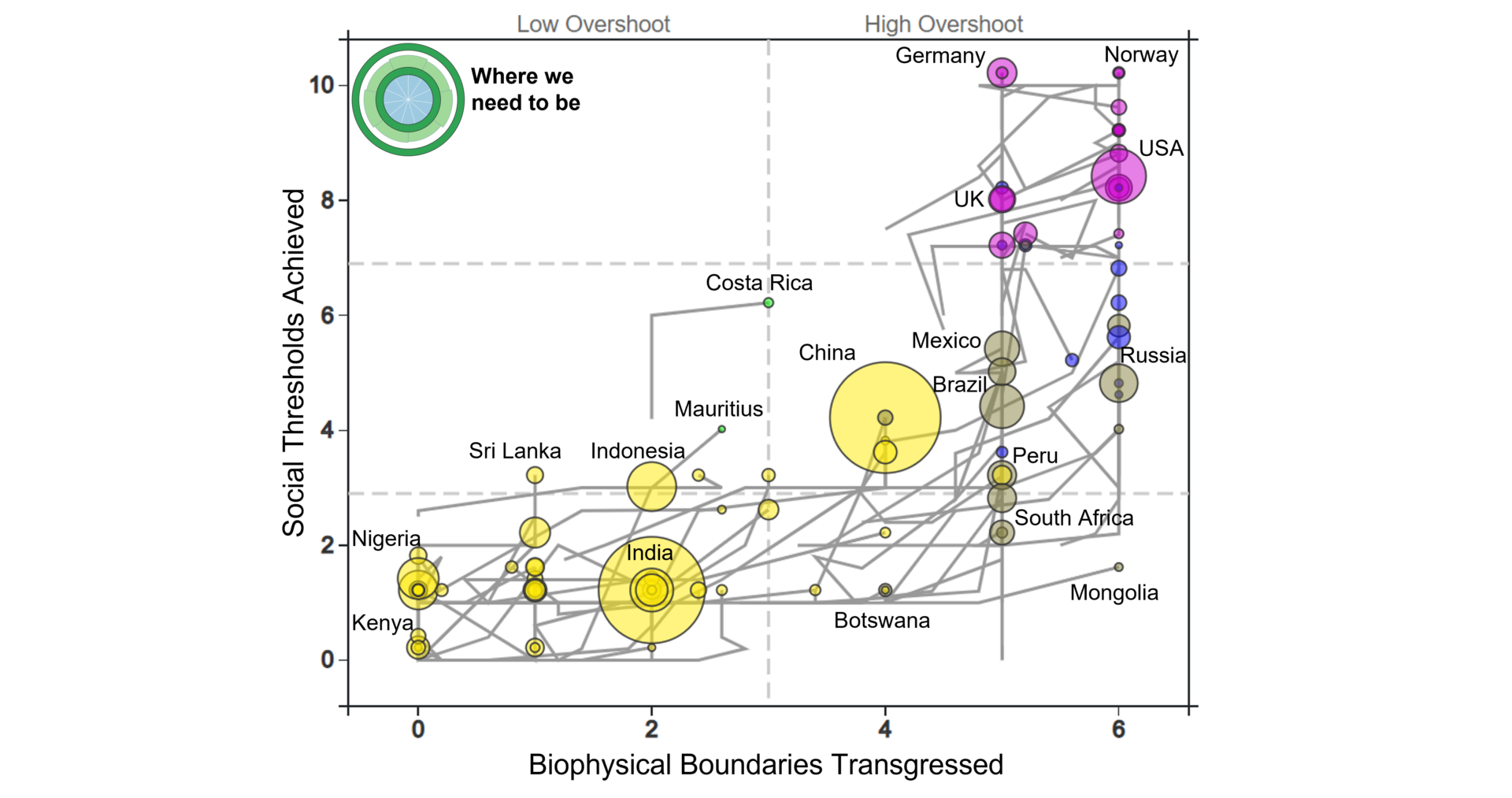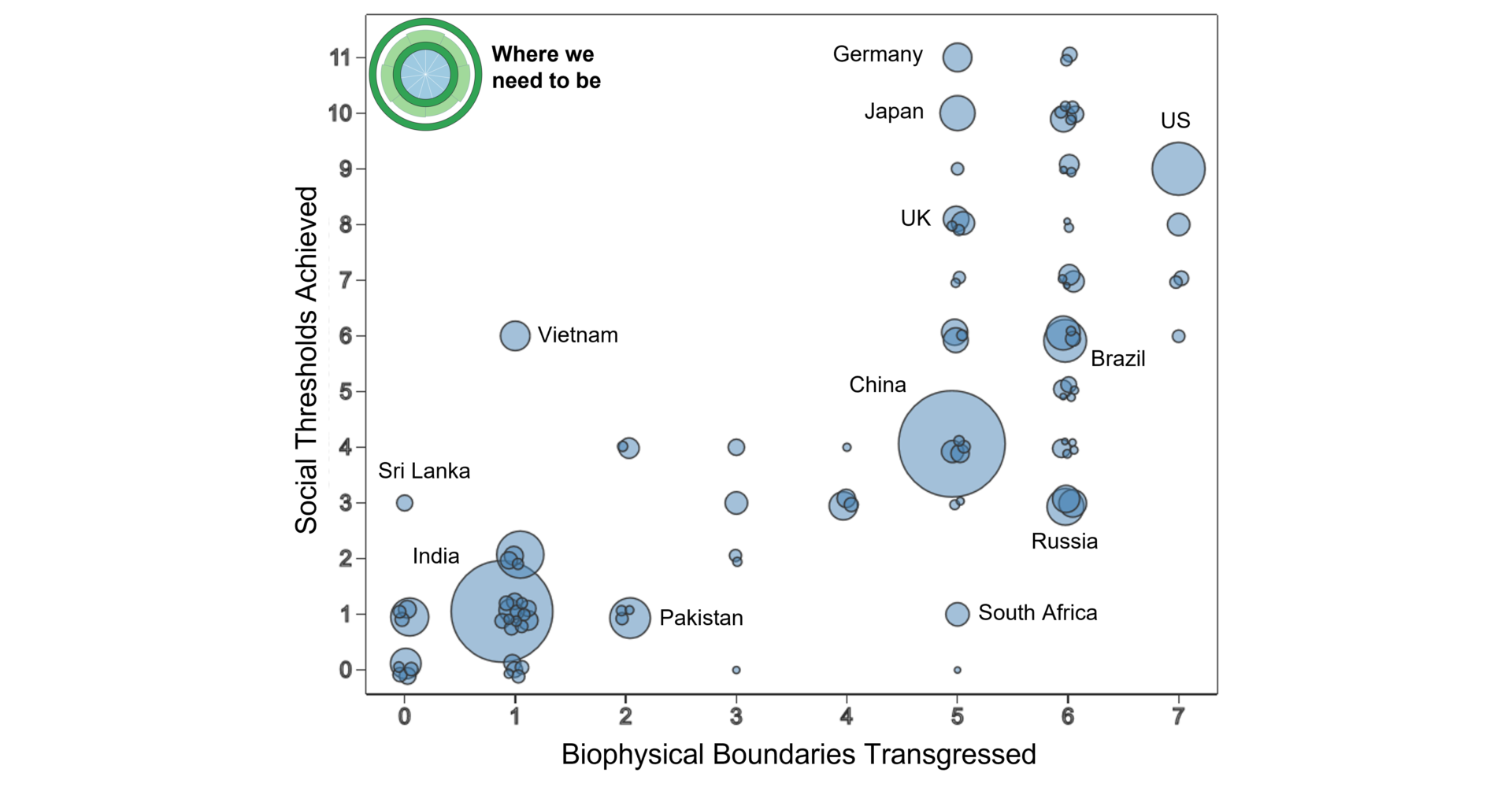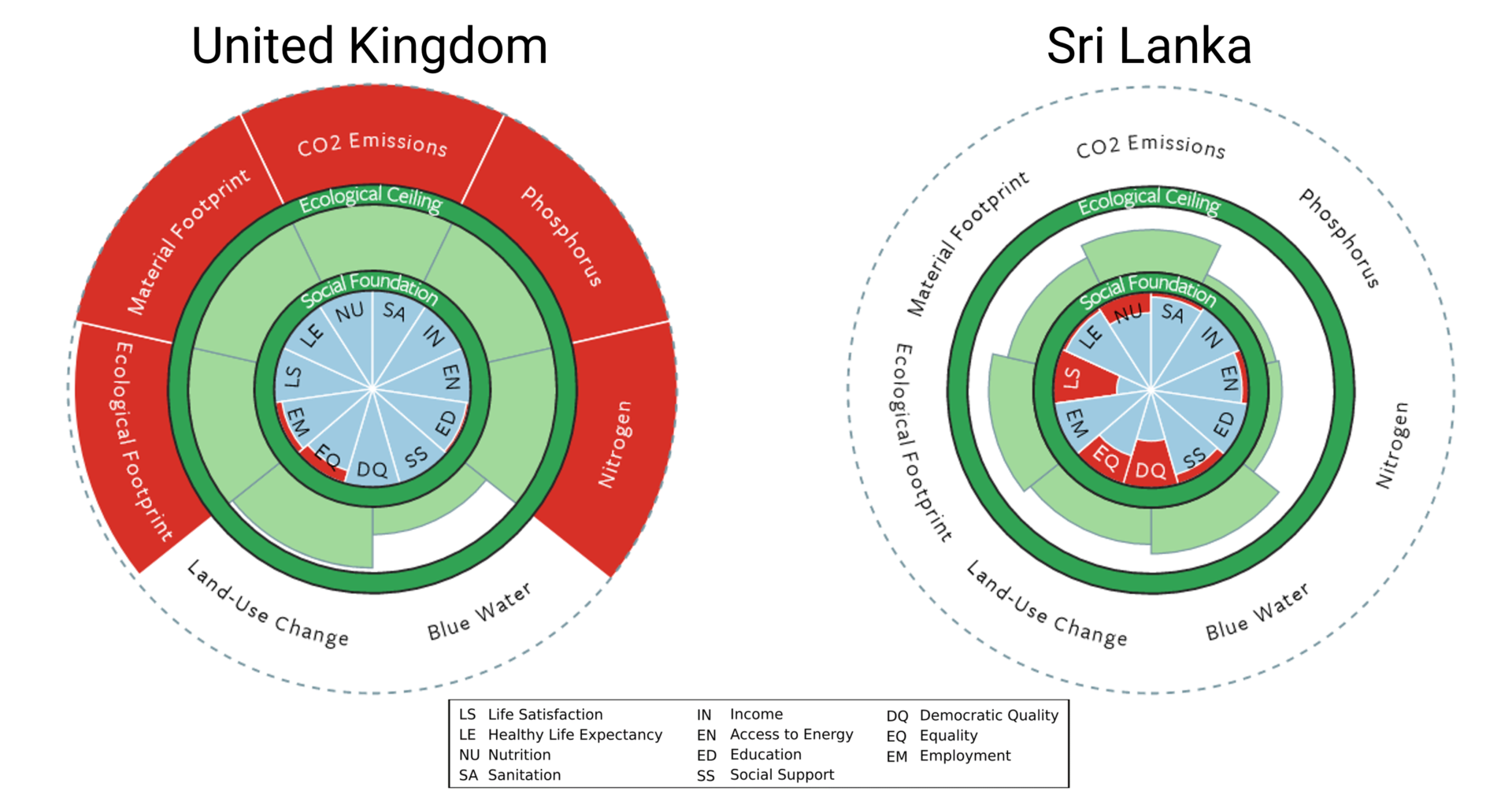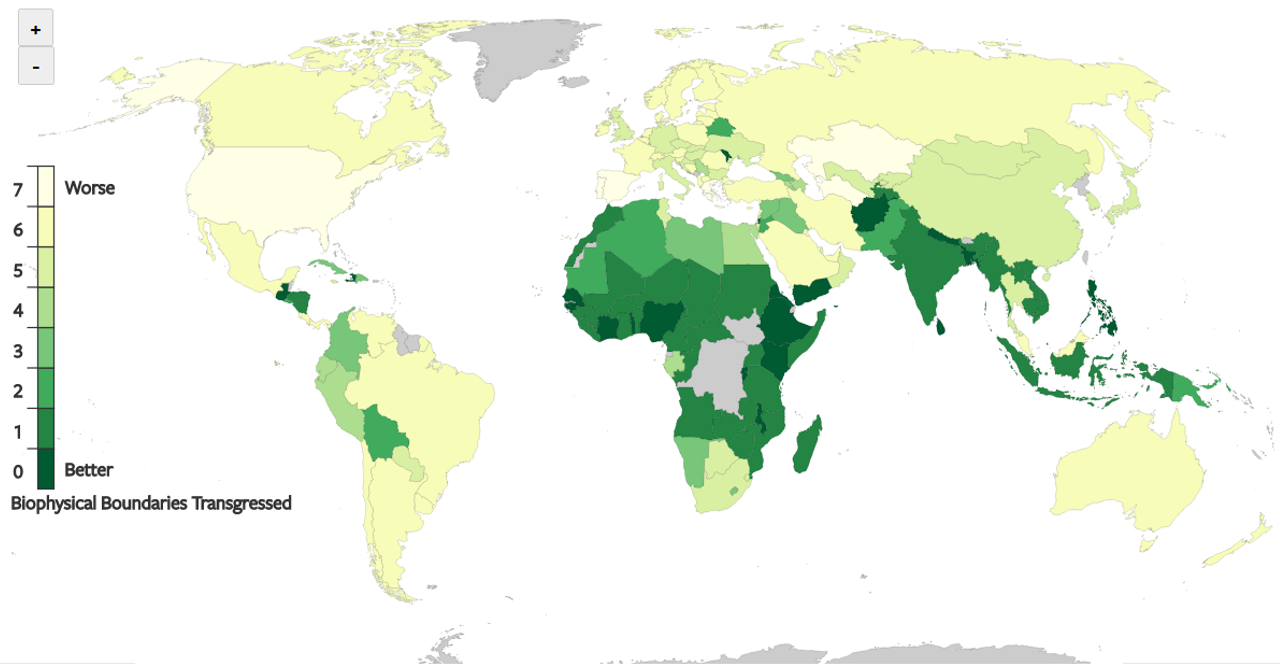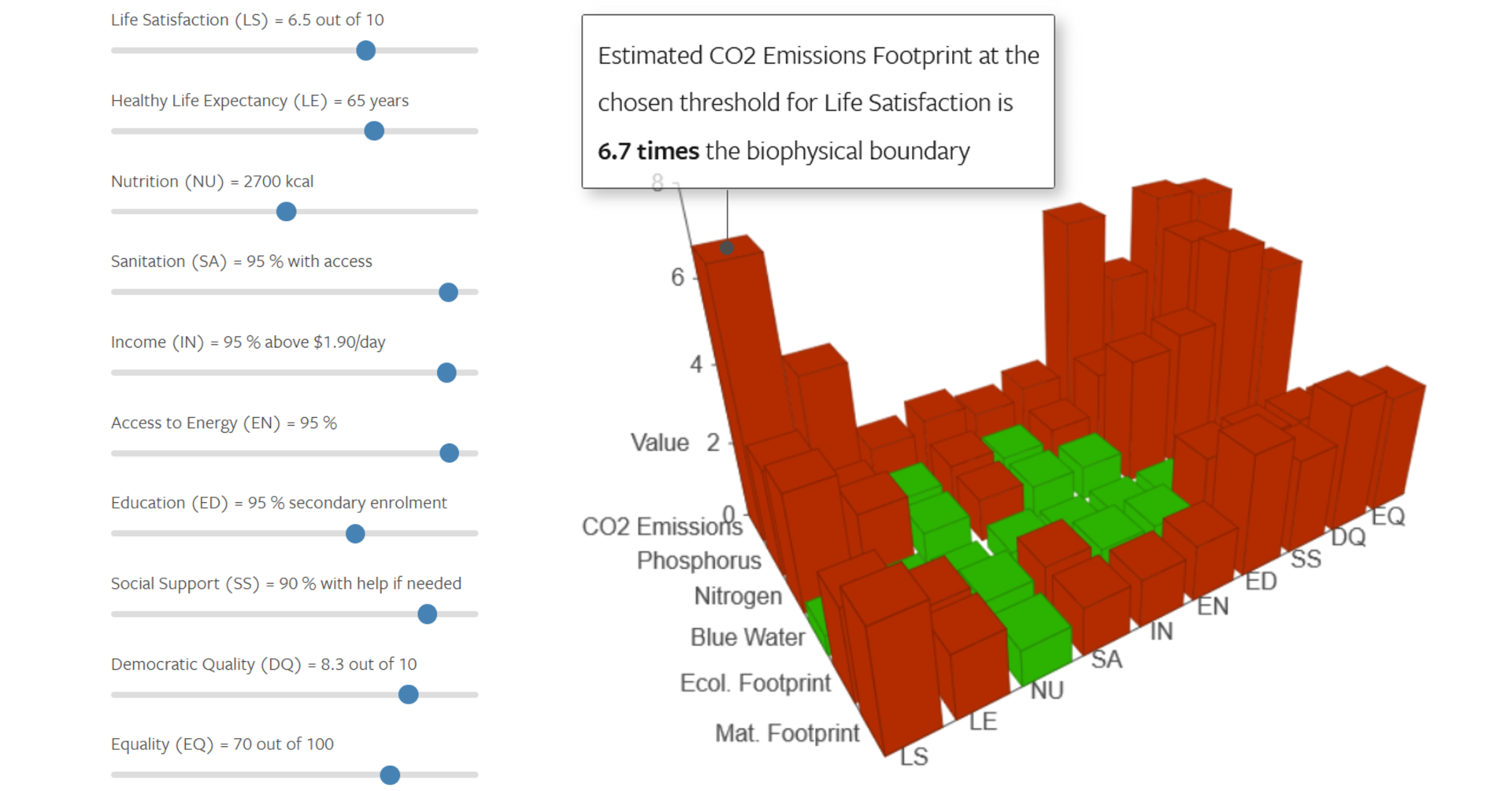Home
A Good Life For All Within Planetary Boundaries
For at least the last 30 years, no country has met the basic needs of its residents at a globally sustainable level of resource use. How does your country compare with others on achieving the goal of a safe and just future for all? How many social goals does it achieve? How many planetary boundaries does it transgress?
National Trends
Countries have been transgressing planetary boundaries faster than they have been meeting the basic needs of their residents. Explore the progress of nearly 150 countries over time using interactive charts and doughnut plots from our recent 2022 study, The Social Shortfall and Ecological Overshoot of Nations, published in Nature Sustainability (available to read open-access, and summarised in Our Blog).
Click or tap on the images above to see the unsustainable pathways that countries have followed from 1992 to 2015, or dig deeper into individual country trends to see how environmental and social performance have changed over time with respect to the Doughnut of social and planetary boundaries.
"The metrics that will help humanity to thrive in the 21st century are only just beginning to be created. This website - and the rich analysis that underpins it - is an incredibly valuable contribution to making that happen, presented in a way that makes its findings widely accessible. If you want to explore the urgent challenges and opportunities of economic transformation - nation by nation - then dive in."
— Kate Raworth, author of Doughnut Economics: 7 Ways To Think Like A 21st Century Economist
National Snapshots
No country currently meets the basic needs of its residents at a globally sustainable level of resource use. Explore and compare national snapshots of the resource use associated with meeting people’s basic needs in over 150 countries, using data from our 2018 study, A Good Life For All Within Planetary Boundaries, published in Nature Sustainability (and summarised in The Conversation).
Follow the links below to see the challenge that humanity faces, and select individual countries to compare their performance relative to the Doughnut of social and planetary boundaries. Check out a world map with our results, or explore relationships between variables to see what different thresholds for a good life would mean for sustainability.
You can also Download Data from both studies – if you want to dig deeper or do your own analysis – or explore Related Research, including national compensation for atmospheric appropriation, responsibility for ecological breakdown, how economic growth affects well-being, some proposals for a doughnut-shaped recovery from the COVID-19 pandemic, and other useful resources from our partners and collaborators.
See the About page for details of who we are, and to learn more about the Doughnut of social and planetary boundaries.



